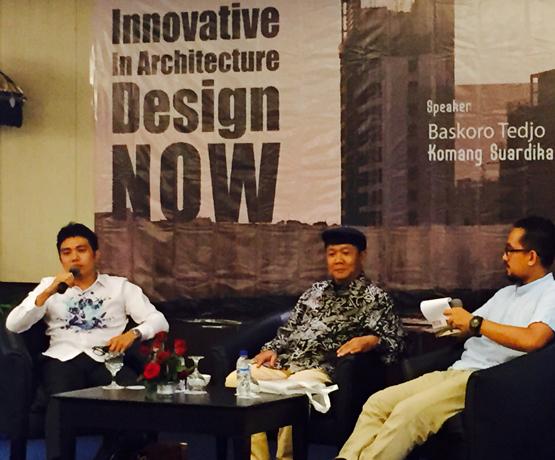
Keynote Speaker, Innovative Design In Architecture
Keynote Speaker on National Seminar, "Innovative Design In Architecture" held By Rupawarna at Sanur Paradise Hotel with other architect: Baskoro Tedjo, February 11st, 2015.
Solution to a design problem can be achieved by understanding the holistic nature of the problem before adopting a problem solving process. As part of Architectural design problem solving Creativity and Innovation are among factors that incorporate new concepts and methods in designing. But, unfortunately these factors are affected by financial position and designer`s level of experience.
This discussion aimed at identifying factors that influence creativity and innovation in architectural design management through the process of observing design from inception to the concluding stage. The management process comprises of design brief, problem identification, search for solutions, design development, detail design, construction process together with pre and post occupancy evaluations. All these activities constitute architectural design management.
Our speech further identifies some of the functions of creativity and innovation in these managerial part of architectural design process. Among the functions identified are designer ideation processes, visual perception of aesthetics on physical elements use for façade design, together with the choice and applicability of building materials. These entire factors represent function of creativity and innovation in architectural design considered for this study.
Designer ideation process was explained as part of designer behavior/actions in generating and manipulating the concept of the design. Visual perception of aesthetics on physical elements use for façade design represents the perception of aesthetics attached to the building elements use for the façade design. Finally the choice of building material represents frequent choice and application of newly innovated building material in the design.
Designer privilege to introduce and manage new design concepts such as shapes, texture, appearance, materials and technological advance in a given design was among other function of creativity and innovation acknowledged in this paper. The paper finally concludes that creativity and innovation are among factors that influence designer ideation, building appearance and choice of building material in architectural design. This session also accompanied by Architect Baskoro Tedjo from Bandung.
